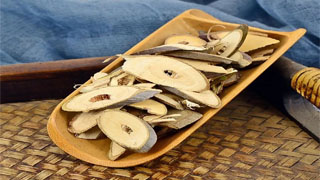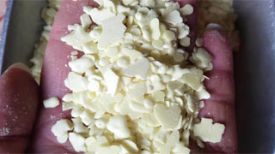
1. Aliases
Peach tree branches.
2. Plant morphology
Deciduous trees. The plant height is 4-8 meters. The tender branches are hairless and glossy. Leaves elliptical or oblong lanceolate, 8-12 cm long and 3-4 cm wide, with gradually pointed tips, wedge-shaped base, and dense serrations at the edges. They are hairless on both sides or sparsely pubescent in the axils of the lower veins. The petiole is 1-2 cm long, hairless, and has glandular dots. The flowers are often solitary, with the first leaf opening and a diameter of 2.5-3.5 centimeters. The pedicels are extremely short. Calyx tube bell shaped, covered with short pubescence. Sepals ovoid or oblong triangular, covered with short pubescence. Petals pink. The stamens are numerous, and the ovary is covered with hairs. Drupe, nearly spherical or ovoid, with a diameter of 5-7 centimeters and a surface covered with villi. The flesh is juicy and does not crack. The surface of the fruit pit has grooves and wrinkles. The flowering period is from April to May, and the fruiting period is from June to August.
3. Origin distribution
Born on slopes, valleys, and valleys at an altitude of 800-1200 meters, or in sparse forests and shrubs in the wilderness. There are many cultivated plants throughout the country.
4. Harvesting and processing
Harvest in summer, remove impurities, cut into sections, and sun dry.
5. Characteristics of medicinal herbs
It is cylindrical in shape, of varying lengths, with a diameter of 0.2-1 centimeters. The surface is reddish brown and relatively smooth, with white dotted skin pores. Crisp texture, easy to break, with a yellow white section, mostly composed of wood, and white pulp. Qi is slight, leaves are slightly bitter and astringent.
6. Nature, taste, and meridian tropism
Mild in nature and bitter in taste. Guixin Meridian and Stomach Meridian.
7. Effect and function
Activating blood circulation, unblocking collaterals, detoxifying, and killing insects. It belongs to the subcategory of blood activating and stasis resolving drugs and is classified as blood activating and menstrual regulating drugs.
8. Clinical applications
Dosage 9-15 grams, decoction in water or powder into pills; Rinse or take a bath with boiled water for external use. Used to treat heart and abdominal pain, rheumatic joint pain, lower back pain, falls and injuries, and psoriasis.
9. Pharmacological research
It has anti-inflammatory effects, cough and phlegm relieving effects, antioxidant effects, lipid-lowering effects, elimination of free radicals, and anti-tumor effects.
10. Chemical composition
The stem contains naringenin and its glucoside, kaempferol and its glucoside, dihydrokaempferol, kaempferol glucoside, hesperidin glucoside, quercetin glucoside, dextrose catechin, β - sitosterol glucoside, and hesperidin-5-O-glucoside.
11. Taboos for use
Pregnant women should avoid taking it.
12. Compatibility prescription
① Treatment for burns: Mash kiwi leaves, add a little lime, and apply to the affected area. (Hunan Pharmacology)
② To treat sudden heartburn: Cut a handful of peach branches, add one liter of wine, fry half a liter, and take a meal. (Mending the Rear Elbow)
③ To treat ulcers in the lower part of the body, boil peach branches in water until they are as sweet as sugar to clear the lower part. If there are sores in the mouth, contain them. (Synopsis of Typhoon Fever)
The content of the article is for clinical reference only. Non professionals in traditional Chinese medicine are not allowed to try medication.


